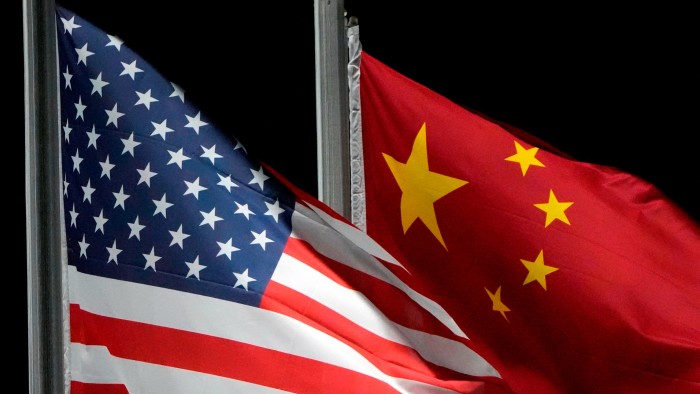The Pentagon’s most senior China official has met his Chinese counterpart for the first time since he flew to Taiwan in February on a secret trip that derailed top-level military talks between the two men.
Michael Chase, the top US defence official for China policy, recently met Major General Liu Zhan, the Chinese defence attaché in Washington, according to people familiar with the meeting, including a US defence official. The meeting occurred before the summit between presidents Joe Biden and Xi Jinping in San Francisco last month.
The meeting suggests the US and China are making some progress towards improving relations between their militaries after Beijing closed formal communication channels in August 2022 after then-House Speaker Nancy Pelosi visited Taiwan.
Biden and Xi agreed in San Francisco to restore military relations, but defence experts have been waiting to see how quickly the two sides would work out the details to arrange high-level engagements.
Chase travelled to Taiwan six months after Pelosi’s visit. It was the first such trip by a senior US defence official since 2019 and he was the first deputy assistant secretary of defence for China to travel to Taiwan since the US normalised relations with Beijing in 1979. The visit, which was first reported by the Financial Times, prompted the Chinese embassy to halt all communications between Liu and Chase.
The people familiar with the situation said the US and China were negotiating a series of senior-level military engagements for 2024 after the Pentagon submitted an initial proposal to Beijing.
But they cautioned that arranging the series of engagements they are hoping for would take time, partly for bureaucratic reasons. The situation in China is also complicated because Beijing has not replaced Li Shangfu, who was formally removed from his post as defence minister in October over a corruption investigation.
Some US officials want China to agree to a call with General CQ Brown, the new chairman of the joint chiefs of staff, who has a counterpart in place, unlike US defence secretary Lloyd Austin, whose counterpart was Li.
“This is not about making something happen overnight,” said a US defence official. “This is about ensuring that defence and military leaders from our two countries — including at the senior-most levels — can have substantive conversations.”
The US wants to restart a channel known as the Military Maritime Consultative Agreement, which is designed to help reduce the chances of an incident at sea spiralling out of control.
The Pentagon is also concerned about a rising number of what it calls “risky and coercive” manoeuvres by Chinese fighter jets close to US surveillance aircraft. China accuses the US of spying, although Washington stresses it is flying legally in international airspace.
The US also wants to arrange a meeting between Admiral John Aquilino, head of US Indo-Pacific command, and his counterparts. He has been trying to meet his two counterparts for almost three years.
Bonnie Glaser, a China expert at the German Marshall Fund, said Chase’s renewed engagement with Liu combined with the lifting of bans imposed after Pelosi’s Taiwan visit paved the way for the US and China to hold the so-called Defense Policy Coordination Talks in January. The DPCT is a mechanism used to map out future high-level military engagements.
While there are signs of progress, tensions between the US and China remain high. The US has in recent days criticised the Chinese military for using water cannons and deliberately ramming Philippine supply vessels near the Second Thomas Shoal in the South China Sea.
On Wednesday, US national security adviser Jake Sullivan held a call with his Japanese and Philippine counterparts to “reaffirm their commitment to freedom of navigation” and “maintaining peace and stability in the Indo-Pacific” region.
In recent months, Washington has on several occasions reminded China that the US has a mutual defence treaty with the Philippines that would be triggered by an attack on members of the Philippine military.



